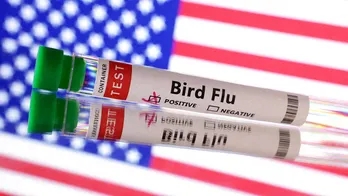A rare and potentially fatal skin infection with nightmarish outcomes may soon have a cure.
The infection starts as a seemingly harmless rash, and before a person knows it, more than 30 percent of the skin on their body begins to blister and peel off in sheets, usually starting with the face and chest before progressing to the mouth, eyes, and genitals.
Infections, organ failure, and pneumonia can soon follow. In a third of all cases, the condition proves fatal. For those who survive, recovery can take months and usually requires similar treatment to burn victims.
The debilitating infection is an immune response to medication, called toxic epidermal necrolysis (TEN), and while it is thankfully very rare, impacting a million or two people worldwide every year, its onset is highly unpredictable.
TEN is linked with more than 200 medications, and it can impact all age groups and ethnicities, although it tends to be more common in females than males and is 100 times more prevalent in those with the human immunodeficiency virus ( HIV).
An international team of researchers, led by biochemists at the Max Planck Institute in Germany, now claim to have cured seven patients with TEN or a slightly less severe version of the infection, known as Stevens–Johnson syndrome (SJS). None of the patients reported side effects.
"I am beyond proud of this incredible research collaboration that has already helped to save the lives of multiple patients," says biomedical researcher Holly Anderton from the Walter and Eliza Hall Institute of Medical Research in Australia.
"All seven people treated with this therapy in our study experienced rapid improvement and a full recovery, in staggering results that have likely unlocked a cure for the condition."
One of those patients was a 59-year-old man who developed TEN across 35 percent of his body after beginning treatment for lung cancer. The patient had lost so much skin, his predicted mortality risk was nearly 60 percent.
Upon taking a novel immune inhibitor, however, his infection stopped progressing. After 16 days, he was almost fully healed.
The class of drugs, called JAK inhibitors (JAKi), seem to work by suppressing an overactive immune pathway.
Scientists discovered the importance of this signaling pathway using skin samples from patients with TEN, to see which individual cells were driving the deadly disease. Altogether, they identified six proteins involved in the JAK/STAT pathway that are upregulated in those with the skin infection.
The JAK/STAT pathway is the main driver of skin inflammation, damaged skin cells, and epidermal detachment.
Using rodent models of TEN, researchers found that one to three days after taking an oral JAK inhibitor, the skin infections had noticeably improved.
"On the basis of our compelling preclinical data and the urgent clinical need in this devastating disease, we treated seven patients with TEN or SJS–TEN overlap with JAKi off-label," writes the team of researchers, led by biochemist Thierry Nordmann from the Max Planck Institute.
All seven patients responded well to the treatment and were discharged in good health, paving the way for a future clinical trial.
"It can take a patient weeks to recover from the damage, even after they've stopped taking the medication that triggered the adverse reaction," says Anderton.
"Being able to rapidly halt progression of this disease, as we have seen in our study, will make a huge difference to the standard of care for patients diagnosed with this life-threatening condition."
The study was published in Nature.



